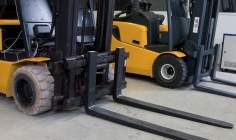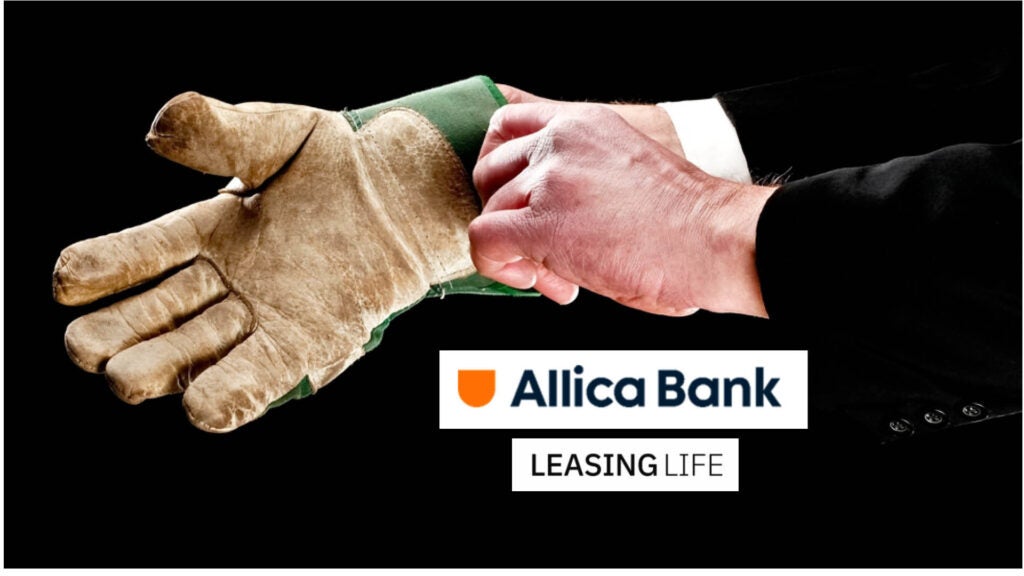
The materials handling asset finance market covers a wide range of different types of equipment, but has been traditional in its methods of financing until recently.
According to the European Federation of Materials Handling (FEM), materials handling covers a wide and unconventional umbrella of conveyors, cranes and lifting equipment, elevation equipment, industrial trucks, intra-logistic systems and other warehouse technologies, but most often in the asset finance world, the term relates to the materials handling workhorse, the forklift truck.
The need for asset finance in such areas is unquestionable. Big corporates want the flexibility to hire materials handling equipment to deal with supply and demand peaks and troughs, while smaller businesses want the flexibility that leasing allows.
Figures from the UK show that in 2014, plant and machinery equipment finance increased by 21% compared to the year before, with total leasing and hire purchases of £5.83bn.
According to Leaseurope, equipment finance grew by 1% across Europe in 2014. Leaseurope’s adviser in statistics and economic affairs, Jurgita Bucyte said that against the backdrop of faltering European equipment investment throughout 2014, it was "particularly encouraging to see that our industry is able to gather momentum" and that "businesses were keen to use
leasing to invest in a wide range of assets, particularly in vehicles."
David Delestre, head of markets, international business line equipment and logistics at BNP Paribas, said while statistics on the changes in the market were not yet available for 2015, his impression was that growth was more positive year than the year before.
"The forklift truck market is dominated by three or four brands.
How well do you really know your competitors?
Access the most comprehensive Company Profiles on the market, powered by GlobalData. Save hours of research. Gain competitive edge.

Thank you!
Your download email will arrive shortly
Not ready to buy yet? Download a free sample
We are confident about the unique quality of our Company Profiles. However, we want you to make the most beneficial decision for your business, so we offer a free sample that you can download by submitting the below form
By GlobalDataThe position of the market leaders have been more or less the same: Toyota, Kion and Jungheinrich playing the leading roles in Germany and the rest of Europe," said Delestre.
The story of the fortunes of the materials handling market, and more specifically the forklift truck subsection, are tied up with the national performance of each European country’s economic index.
"I think [the materials handling market] is a less cyclical market," said Delestre. "It’s a market driven by the evolution of [each respective country’s] industry’s economies. So if you have a gross expectation of the financial results of a nation’s economy, which is the case for 2015/2016, I would say that the forecast for the materials handling market has to be aligned with those positive drivers."
Delestre said the majority of BNP’s business for forklift finance was coming from SMEs and smaller players, regardless of which European country the business originated from.
"The bulk of our customers are SMEs and compact companies, on average creditworthy companies. I think you have something consistent in terms of customer profiles throughout Europe if you focus on the forklift segment, in Germany, Italy, France, and Spain for example," said Delestre.
"We’re talking about companies that are looking for cost-efficient solutions in terms of lifting their products in-house or in the space inside or outside, with electric trucks or diesel trucks."
Types of finance
Types of finance can vary hugely, as does their popularity, said Andrew Woodward, head of material handling at Investec Asset Finance.
"There might be patterns in order intake, but the method of finance is often different. The UK tends to be predominantly rental and contract hire, so an operating lease with a maintenance package, with the dealer agreeing to buy the truck back at the end of the term – five years is the average lease.
"On the continent, particularly in France, a lot of it is done on a back-to-back basis. A dealer will finance the trucks with a bank or financial institution and write the business their own rental agreements. But the finance companies don’t actually have a direct involvement with the customer.
"Rental isn’t as popular in Europe – a lot more of it is hire purchase and ownership, whereas we tend to utilise rental – much
of the reason for that being accounting considerations. It’s an off-balance sheet asset, so it improves the return on capital. There are ongoing discussions on accounting practices to try and bring it in line with the rest of the world and the US."
On the supply side, the issues that affect the equipment’s financing are reliably the same, says ABN-Amro managing director George Ashworth.
This includes perennial issues such as the accurate billing and collecting of service-inclusive rentals; the accurate splitting and remittance of maintenance monies to vendors; the accurate handling of end of life issues by way of contractual extensions (full/partial), buy backs and terminations. On balance, the supply side of this market has advanced little, if at all, said Ashworth.
But the demand side is quite a different matter.
"I believe that vendors are losing patience with traditional providers of sales financing programmes and are turning increasingly to asset-based lending (ABL) type solutions in order to give their businesses the flexibility it requires," says Ashworth.
"Undertaking such moves will, relative to a traditional tripartite sales aid arrangement, allow the vendor to capture a greater percentage of the value that hitherto funders were capturing," said Ashworth.
Woodward at Investec says warehouse distribution is "doing very well at the moment" but that retail sales, and ultimately confidence, would dictate the outcomes of the market’s results in Europe and the UK.
"As chairman of the UK’s forklift truck association, the confidence that we’ve seen over the last 18 months is continuing," Woodward says.
"In our survey of 100 or so dealers, around 80% said they expected between 10% and 15% growth on last year."
Importance of vendor relationships
In a niche equipment finance market, vendor strategy and marketplace orientation are key.
Delestre at BNP Paribas explains: "You have players which have their own in-house financing structure, which are able to fund their own customers through a full package of financing solutions, from hire purchase to full end-solutions for the customers.
"For this approach generally either we are funding partner of the captive company of the vendor. When they do not have the means, or do not have the strategy to operate in-house, then we have some different models – a joint venture structure with either the vendor or the importer locally."
As for the financing tie-in, should the manufacturers not have a significant financing unit, there’s an element of need for the independent leasing firm’s services.
"If manufacturers offered their own finance package, it would mean they wouldn’t be able to invoice anyone for the goods," says Woodward.
"The manufacturer sells it to us as a financial institution; we pay them in full for the goods, and they guarantee to buy it back in five years’ time for a resale value of a smaller amount. We then bolt on the maintenance payment that they require onto our finance element."
Funders want to be associated with manufacturers, particularly quality brand names in the industry, in the firm and true knowledge that quality goes to quality.
Ashworth says the nature of the manufacturer tie-up is subject to change, especially with a mind to bank asset finance.
"For authorised institutions (aka banks) joint ventures are probably off the table by virtue of the risk weighting implications associated with them," Ashworth says. "If not, then I would suspect that the distribution channel is of such value that for a joint venture to be retained the business written through them would in the future probably be sold down, providing the finance vendor is able to meet any and all obligations to the equipment vendor.
"The alternative to this is that we shall see non-authorised institutions substituting banks as the key players in this area of vendor sales finance.
Upcoming trends
With the bulk of business for most major lessors being the SME market, the idea of securitised loans and asset-based financing-type arrangements is an interesting trend, one that could spread from the UK where it is currently developing.
"I think that what we are seeing now here in the UK in respect of ABL-type initiatives will be replicated in due course across the European landscape – the general rule of the UK following the US, and then Europe following in train, applies," said Ashworth.
"I don’t think you have to look any further than the BRIC nations (Brazil, Russia, India and China). These are the nations outside Europe that are taking an increasing share of world trade, and as a result where materials handling equipment is required to construct, to move and to maintain other goods and/or equipment."
And manufacturers have driven the market by prior strategising, making finance for these assets an integral part of their sale.
"Rental is the financial facility of vendor choice regardless of jurisdiction," says Ashworth.
The vendors of materials handling equipment realised a long time ago that if their businesses were going to have to rely solely upon gross margin on sales then they could not survive as they were. Finance, via full-service rental, is used strategically to gain better economic control over an installed base of equipment and clients. The extent to which finance is used depends upon the vendor and to some degree upon the capabilities and risk appetite of their financing partner or partners,"
Innovations
The assets in the market have been revamped through technical innovation. Automated guided vehicles (AGVs) in warehouses, sit alongside tech developments and small scale revision of forklift fleets, with green policies and safe emissions work for vehicles playing a part.
Woodward says: "The trucks themselves are constantly reviewed: there’s lots of emissions work that’s gone on over the past two years. Health and safety has meant that there are more businesses requiring more forklift trucks than before – heavy lifting can be a serious risk to personnel."
The need to keep fleets updated is necessary for the businesses, with good fleet management, as it is for lessors to keep abreast of new financing patterns.
FEM put annual repair and maintenance costs for all materials handling sectors at 8.6bn in 2013, so keeping warehouse vehicles maintained and replaced is high on the agenda.
BNP’s Delestre says industries that use materials handling vehicles, like construction, are cyclical, but the finance elements defy that pattern.
"Industry or businesses do not invest because of subsidies; they invest because they have the capacity to do so," says Delestre. "It’s a renewable market. For a fleet, you need to come to the decision to renew, which is also something that sustains the market even when the global economy is decreasing. You need to renew your forklift fleet despite economic circumstances."
Ashworth says while the asset finance may have resilience due to the renewal loop, space would still need to be made for innovation in the types of finance offered in the first place.
"Looking to the future, I can see the traditional tripartite sales financing programmes being limited to franchised dealer and materials handling equipment resellers with the mix of equipment increasingly becoming used in nature," says Ashworth.
"New equipment business I can increasingly see as being financed by the vendors themselves under their own in-house ABL type arrangements."







